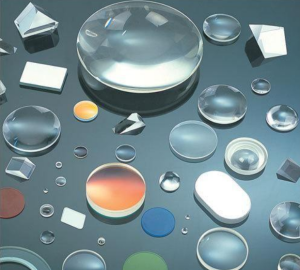What material is used for optical lenses? A lens is an optical element made of transparent material with a spherical surface. The lens is composed of several lenses, which are currently used in plastic and glass lenses. Glass lenses are more expensive than plastic. Usually, the lens structures used for cameras include 1P, 2P, 1G1P, 1G2P, 2G2P, 4G, etc. The more lenses, the higher the cost. Products with good quality should generally use glass lenses, which have better imaging effects than plastic lenses. Next, let’s talk about optical lenses.
Glass lens:
Optical glass has high transparency, purity, colorless, uniform texture, and good refractive ability, so it is the main raw material for lens production. Due to different chemical composition and refractive index, optical glass includes:
1. Firestone glass – Add lead oxide to the glass composition to increase the refractive index (1.8804).
2. Crown glass — made by adding sodium oxide and calcium oxide into the glass composition to reduce its refractive index (the refractive index of barium crown glass is 1.7055).
3. Lanthanum crown glass is the discovered variety. It has the excellent characteristics of high refractive index and low dispersion, providing conditions for creating large aperture advanced lenses.
Plastic lens:
Plastic lenses usually refer to lenses made of transparent plastic material PMMA (commonly known as acrylic), and are also made of transparent PC material. Disadvantages of comparing plastic and glass:
1. Poor temperature characteristics: Compared to glass, plastics are more susceptible to environmental influences on their optical properties. Because once the heat-resistant temperature is low and the coefficient of thermal expansion is large, the optical components will deform and affect the optical characteristics. Low precision compared to glass: Due to the material characteristics, plastic has a high non-uniformity and is prone to shrinkage deformation, resulting in difficulty in controlling precision.
2. Poor scratch resistance: Plastic has low mechanical strength, and the hardness of the material is not as hard as glass, resulting in poor scratch resistance.
3. Compared with optical glass, there are fewer kinds of materials: because optical glass has been developed for a long time, plastic lenses have fewer kinds of materials and lower refractive index, about 1.5 to 1.6, with a narrow distribution
4. Birefringence phenomenon: causing a decrease in optical performance. A certain amount of production is necessary to achieve economic benefits: Plastic injection molding molds are very expensive, and it may cost hundreds of thousands or millions of dollars to open a mold. Therefore, if a certain production scale is not reached, it is not in line with economic benefits.
5. Size limitation: Plastic lenses with an injection molding accuracy of less than Φ 100mm may have forming problems. It can also be said that the larger the size, the more difficult it is to control the accuracy.
Plastic lenses have many disadvantages compared to glass, but they need to be targeted at certain industries. Plastic materials have low prices and large production volumes. For specific functions and advantages, please consult Hanzhong Borisun Optics.




